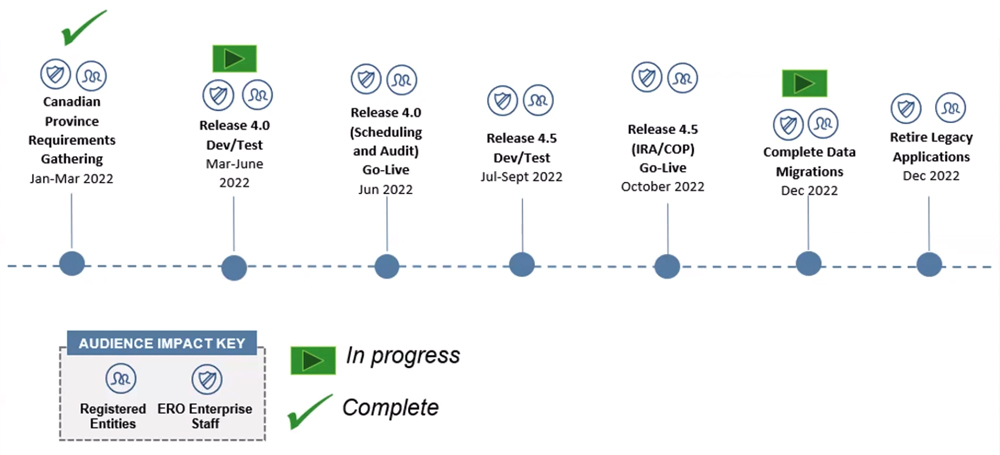New York residents concerned about safety issues told state officials this month that they lack representation on the board overseeing the Indian Point nuclear plant decommissioning (Case No. 21-01188).
Several residents recommended that Peekskill-based scientist and environmental activist Courtney Williams be appointed to the Decommissioning Oversight Board (DOB), speaking at its public meeting held with the Indian Point Closure Task Force on March 17, with many submitting their comments for a Wednesday deadline.
“This is really discriminatory not to have community representation by a qualified resident from an environmental justice community,” White Plains resident Ellen Weininger said.
Weininger also joined others and a group called “Stop the Algonquin Pipeline Expansion” in seeking better oversight of Camden, N.J.-based Holtec, managing the decommissioning, and Enbridge’s cooperation in safeguarding its three high-pressure Algonquin natural gas pipelines that pass close to the shut-down nuclear plant and its growing platforms of spent-fuel casks.
“A secretive company with a continuously morphing array of limited liability entities is now in charge, with the [Nuclear Regulatory Commission] handing out exemptions like hotcakes at each site Holtec is working on,” the environmentalists said.
Holtec formed a partnership with Montreal-based SNC-Lavalin to help win regulatory approval of its bids to decommission nuclear plants in three states, but later dissolved the partnership, according to several comments.
Holtec had reached out to an international company, which then did not work on Indian Point. DOB member Sandra Galef expressed concern that the relationship was “just a façade.” Galef is the state assemblywoman for the 95th District that includes Buchanan, site of the nuclear plant.
“We’re taking a fleet approach,” Rich Burroni, site vice president for Holtec, said.
Holtec is decommissioning the Pilgrim plant near Boston and is ahead of schedule at Oyster Creek in New Jersey. “We’re an international company, so we’ve taken that experience, and it’s helped us here at Indian Point,” Burroni said.
Safety First
Williams said that she was “very happy” to hear from Burroni that he now knows how to contact Enbridge, that there’s a direct line in the control room and that there are iron plates over the pipeline.
“All of that is new since I visited the plant in December, and they had no idea who their Enbridge counterparts were, how to reach out to them and didn’t feel it was necessary to put plates down, etcetera,” Williams said. “I hope that Holtec is not still assuming that if the pipeline blows up, they’re going to go out there with fire hoses.”
She also complained that the DOB’s responses to questions posed at its previous public meeting in October were not posted online until the day of the current meeting.
Iron plates on top of pipeline road crossings would not prevent a rupture, but would be serious projectiles in a rupture, and deactivated reactors do not reduce the potential of a cataclysmic fuel pool explosion should a rupture occur, North Salem resident Susanna Glidden said.
“Construction of Indian Point never should have been approved near two fault lines and on top of the gas pipeline with another added a few years later and recently the massive [Algonquin Incremental Market] AIM pipeline,” Glidden said.
Approval of the 42-inch, 37.6 mile-long AIM pipeline was based on being able to shut off the gas from the control room in Houston in three minutes should a rupture occur, but that was found to be a false claim, she said.
“Moreover, instead of stored fuel casks lined up like bowling pins broadcasting a target for terrorism, we want them protected the real way with a hardened surface and berms,” Glidden said.

Indian Point is one of only five U.S. nuclear power plants with continuous radiation monitoring capability, Burroni said. The site’s exiting pad will hold 75 spent-fuel casks, and the company is building a new pad that will hold an additional 52 casks, with the final concrete pour scheduled for this spring.
It is not necessary to hit a transmission pipeline to cause it to rupture, as abnormal service loading can cause the pipeline to either crack or stress, said Rick Kuprewicz, president of Accufacts and a pipeline safety expert.
“There can be unusual decommissioning activities that could put a stress on the pipelines even though that activity is off the pipeline right of way, so it’s important that Holtec and Enbridge communicate what the various activities are and be sure that Enbridge understands what’s going on,” Kuprewicz said.
Union Concerns
Local unions also have become frustrated with Holtec during the Indian Point decommissioning process.
The company has excluded Chauffeurs Union Local No. 456 from construction work that its members have performed for decades, said task force member Louis Picani, who represents Teamsters and Local 456.
“Now Holtec is excluding Teamsters from performing construction work at the site for all decommissioning work,” Picani said. “Moreover, while the Teamsters were told that they would be included in a successor agreement covering this work, Holtec has reneged.”
In addition, Local 456 has long represented the nuclear security officers at Indian Point and has filed numerous grievances concerning Holtec breaching the collective bargaining agreement, as well as retaliating against members for engaging in protected, concerted activity, he said.


